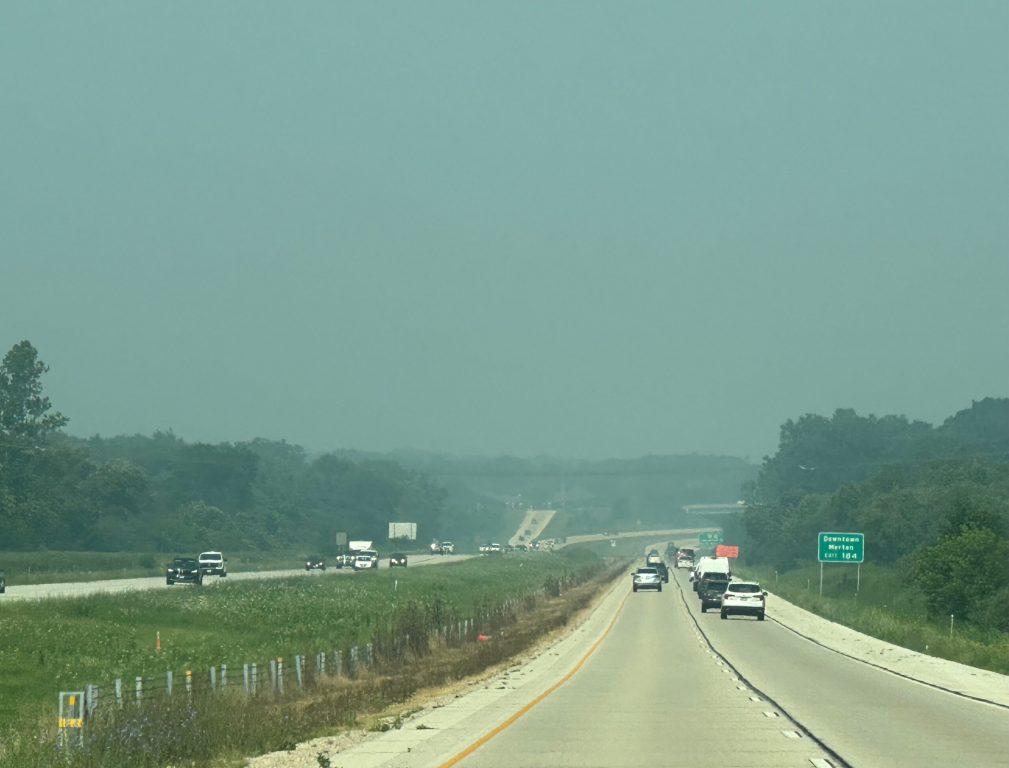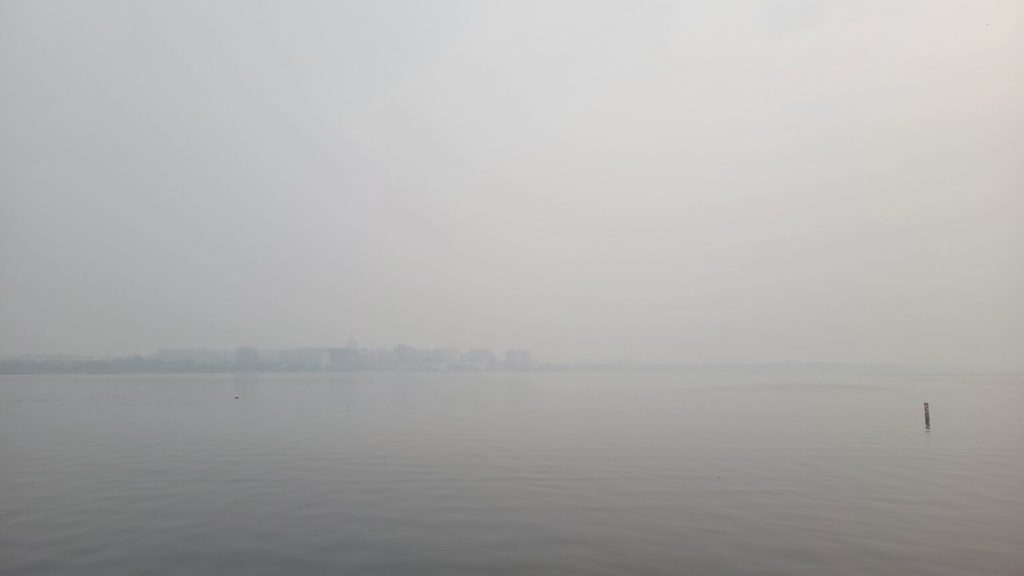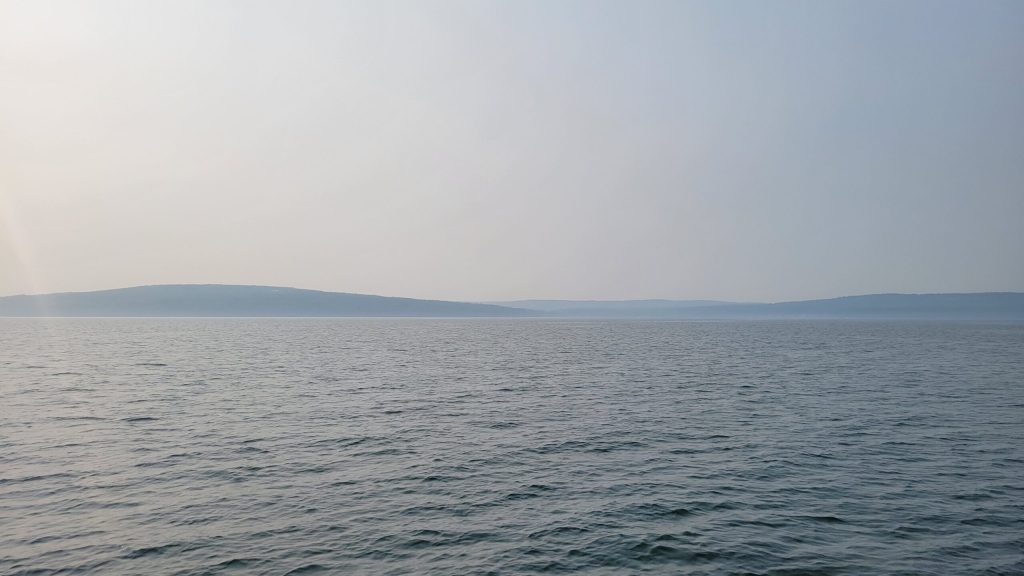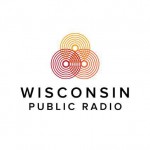Is Wildfire Smoke Pollution Wisconsin’s New Normal?
More than half of Wisconsin's counties under advisory, again, until Tuesday.

A photo of the smoky air near Merton, Wis., July 2025. Photo courtesy of the Wisconsin Department of Natural Resources
This summer, Wisconsin has been under a haze of smoke as wildfires blaze in Canada, prompting questions about whether this is a new normal for summer months in the Badger State.
Currently, 46 Wisconsin counties are under an air quality advisory until 3 p.m. Tuesday, putting the state on track for a record-breaking number of days affected by wildfire smoke.
Czarnecki told WPR’s “Wisconsin Today” that Canada has been experiencing shorter winters and less precipitation, creating the ideal conditions for wildfires to start and spread. Right now, Canada is in the midst of its second-worst wildfire season on record, trailing only behind 2023. That summer, Wisconsin had 21 days of air quality impacted by wildfire smoke, according to data from the DNR.
“2023 was the first time we’ve dealt with this in a really long time, so it was kind of a new thing for everybody,” Czarnecki said.
That year, the DNR boosted its public outreach efforts by giving more lead time for air quality advisories and using popular websites like Nextdoor to spread the word.

A photo of the Madison skyline from June 2023 on the day the AQI was rated “unhealthy.” Photo courtesy of the Wisconsin Department of Natural Resources
Over the past two months, the DNR has issued multiple air quality alerts on days the Air Quality Index, or AQI, exceeds 100 for more than four hours. That signifies the orange level, which is considered “unhealthy for sensitive groups.”
The poor air quality has led to canceled events and vacations during prime outdoor season in Wisconsin. Last month, two Republican representatives from Wisconsin signed onto a letter to Canadian Ambassador Kirsten Hillman urging Canada to do more to prevent wildfires.
But experts say more severe wildfire seasons — and the smoke that comes with them — are a product of climate change. That means there will likely be more summers like this one on the horizon.
Days of wildfire smoke forced Wisconsin summer camps to pivot
A ‘new normal’ around the country
Colorado has been dealing with unhealthy air quality due to wildfire smoke for several years, both from local wildfires like the Marshall Fire of 2021 and from faraway fires blazing in the Pacific Northwest.
“Coloradans have been used to checking the air quality index for quite a while,” said Colleen Reid, a geography professor at the University of Colorado Boulder who studies the health impacts of environmental change.
“The challenge with wildfire smoke is that it’s different from other pollutants,” she added.
While PM2.5 is present in everyday sources of air pollution like car exhaust and industrial emissions, people are exposed in smaller quantities over a long period of time. Wildfire smoke, on the other hand, brings a high concentration of PM2.5 that typically lasts a few days.
Reid is hopeful that research can shine a light on the health impacts of both kinds of exposures. One of her current projects focuses on how wildfire smoke affects children, who have smaller lungs and are more susceptible to negative health impacts of PM2.5. Specifically, the study looks at whether the air quality tends to be better in home settings or at schools, which could help policymakers decide whether to keep schools open during wildfire events.
“If we can make schools clean-air spaces for all kids to have at least for seven hours a day, I think that that’s a huge step toward protecting children from this exposure,” she said.
What to do when dealing with smoky air
Public health officials recommend taking precautions on days when the air quality is unhealthy, especially if you are in an at-risk group. This includes “people with heart or lung disease, children, older adults, pregnant people, and people who live, work, or exercise outdoors,” according to the Public Health Madison & Dane County website.
Even if you are not in one of these “sensitive groups,” you might experience symptoms like coughing, shortness of breath, headache or fatigue on days when the air quality is unhealthy.
“It’s really important to pay attention to what the AQI is, and then pay attention to any symptoms that you may be feeling,” Czarnecki said. “I would say listen to your body.”
As air quality advisories become more common in Wisconsin, people might find themselves adopting new habits like purchasing an air purifier for their home, wearing an N95 mask on smoky days, signing up for text or email alerts from the DNR or downloading an AQI app.
“Like you check the weather every day, check the air quality every day — especially during the summer months, just building that into your routine,” Czarnecki said.

Hazy skies over the water in Bayfield, Wis., July 2025. Photo courtesy of the Wisconsin Department of Natural Resources
Is air pollution from wildfire smoke the new normal for Wisconsin? was originally published by Wisconsin Public Radio.
If you think stories like this are important, become a member of Urban Milwaukee and help support real, independent journalism. Plus you get some cool added benefits.



















